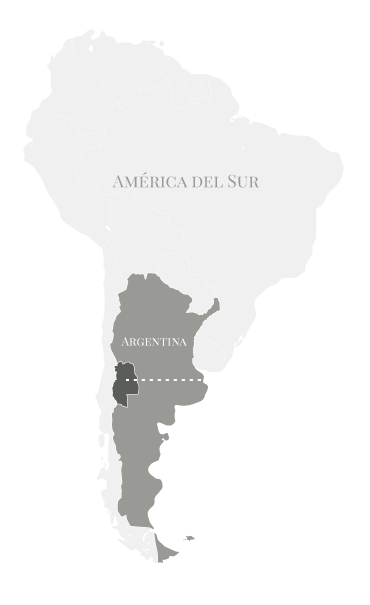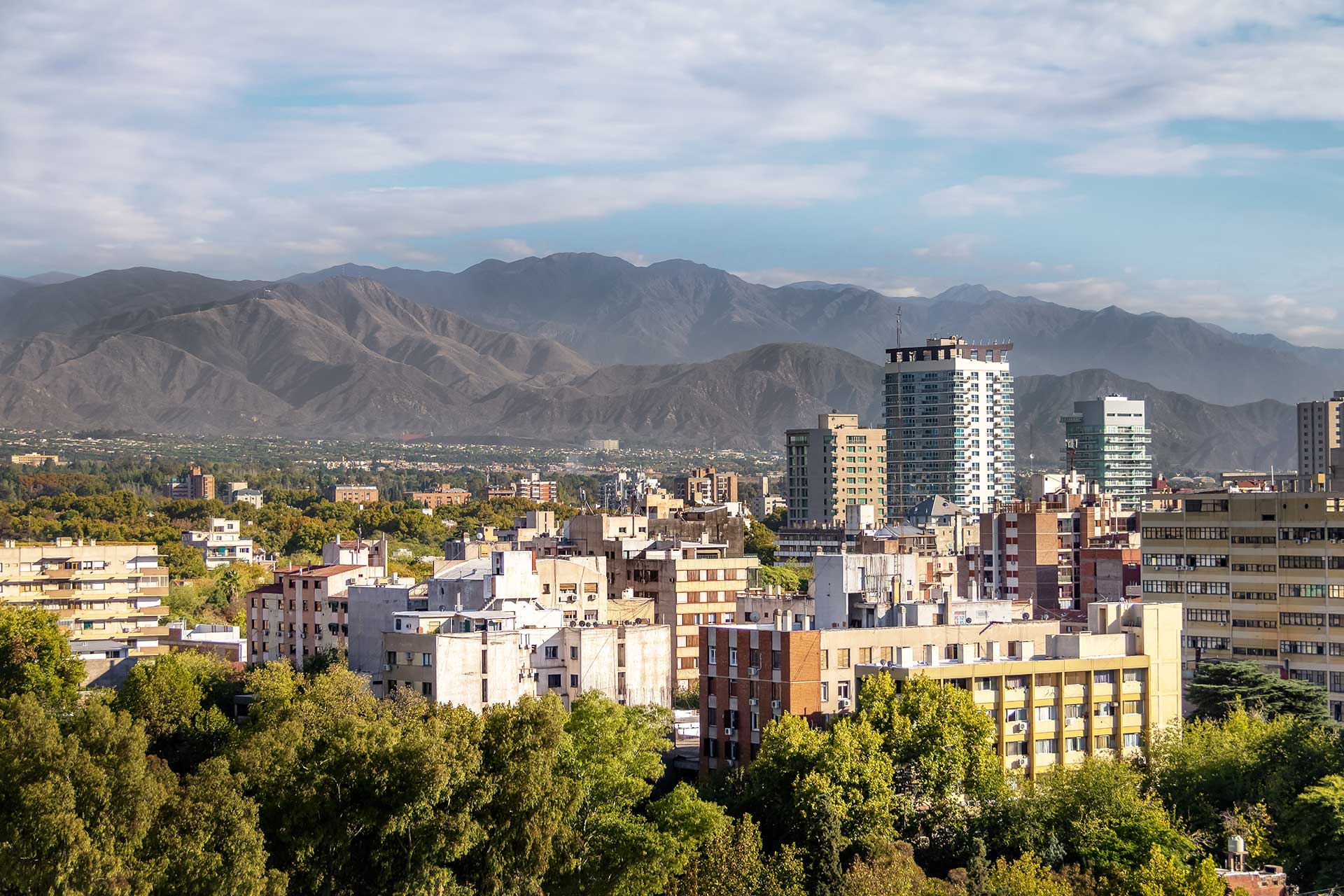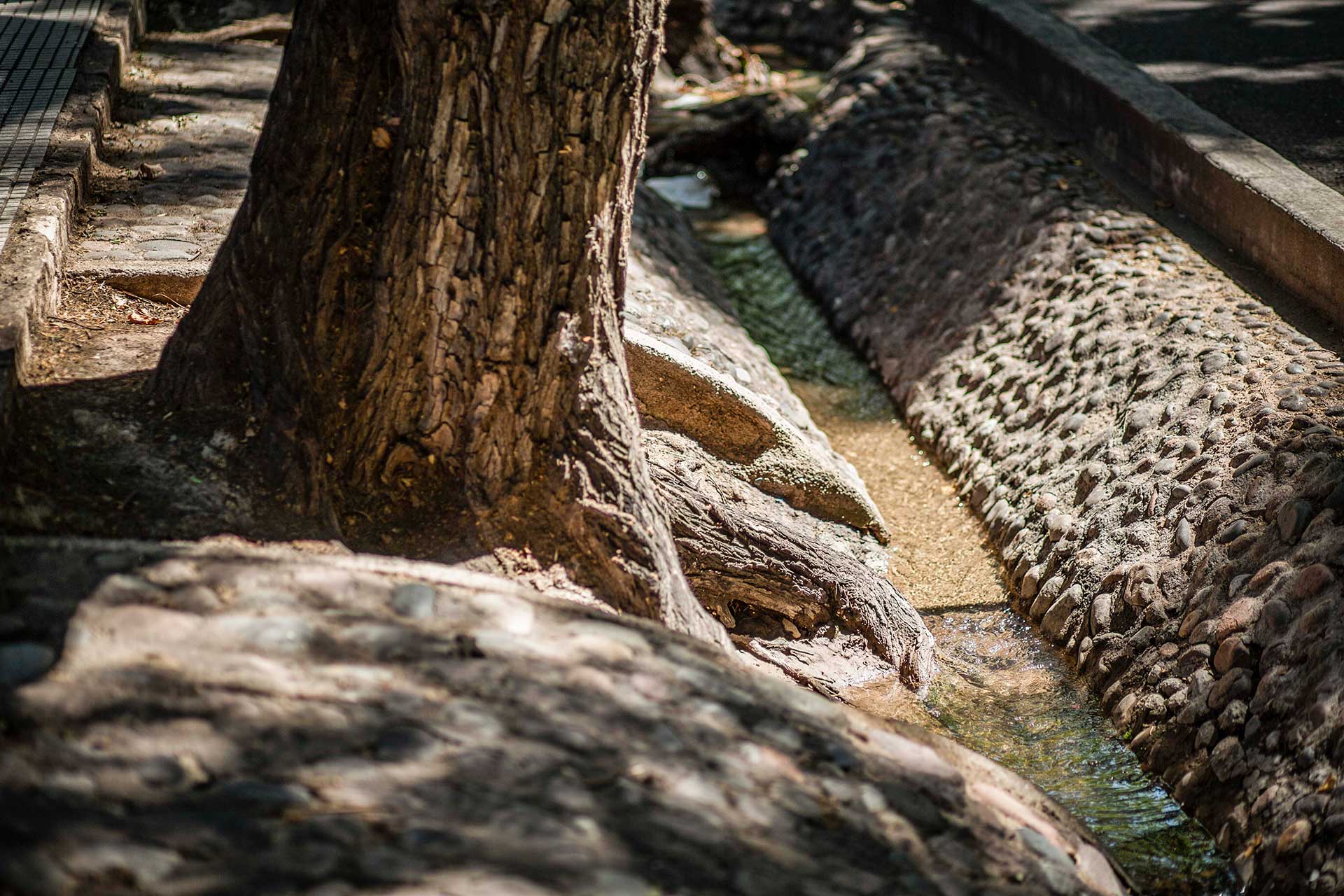Mendoza
Mendoza is a high-altitude desert. The Andes shape its climate, because their immense height blocks fronts of humid air from the Pacific. Rains are scarce and concentrated mainly in the summer, when fronts of humid air from the Atlantic arrive from the southeast. Water reserves come from snow in the Andes, which accumulates in underground aquifers. Irrigation water for some land is snowmelt that flows into rivers and then canals. This water reserve shapes Mendoza’s agriculture, since scarce rainfall of around 12 inches (300 mm) per year does not allow for rain-fed agriculture. The region is characterized by its low cloudiness and strong sunshine, with skies that are almost always blue. Mendoza is in the region of Cuyo, where the strength of immigration, mainly Italian and Spanish, has shaped vigorous agricultural growth. This has recreated the landscape of the Mediterranean and its emphasis on vineyards and orchards, including olive trees.

the city
The city of Mendoza is located on the plains east of the Andes. Founded in 1561, it is a cosmopolitan city, due to the large number of Italian and Spanish immigrants who arrived between the last quarter of the 19th century and the first quarter of the 20th century. Even though the climate is arid, the city has many green spaces and trees, which are watered by small canals (acequias) that are run along almost all streets, bringing trees the water they need. The picturesque landscapes of Mendoza are framed by the Andes mountains. Its many sunny days make it a very attractive destination. Wine growing has become the most defining activity of the local culture, attracting many visitors who stay in the city and tour areas where the vineyards and wineries are located.

